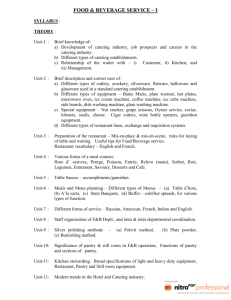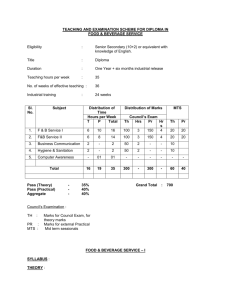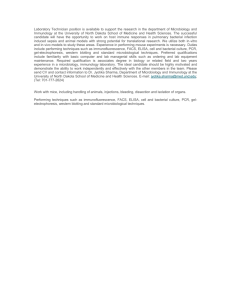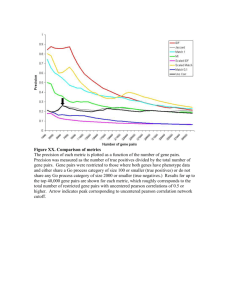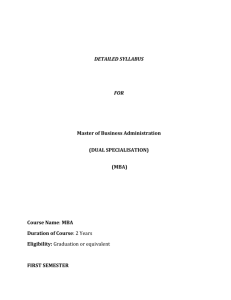Unit-2 - Andhra University
advertisement
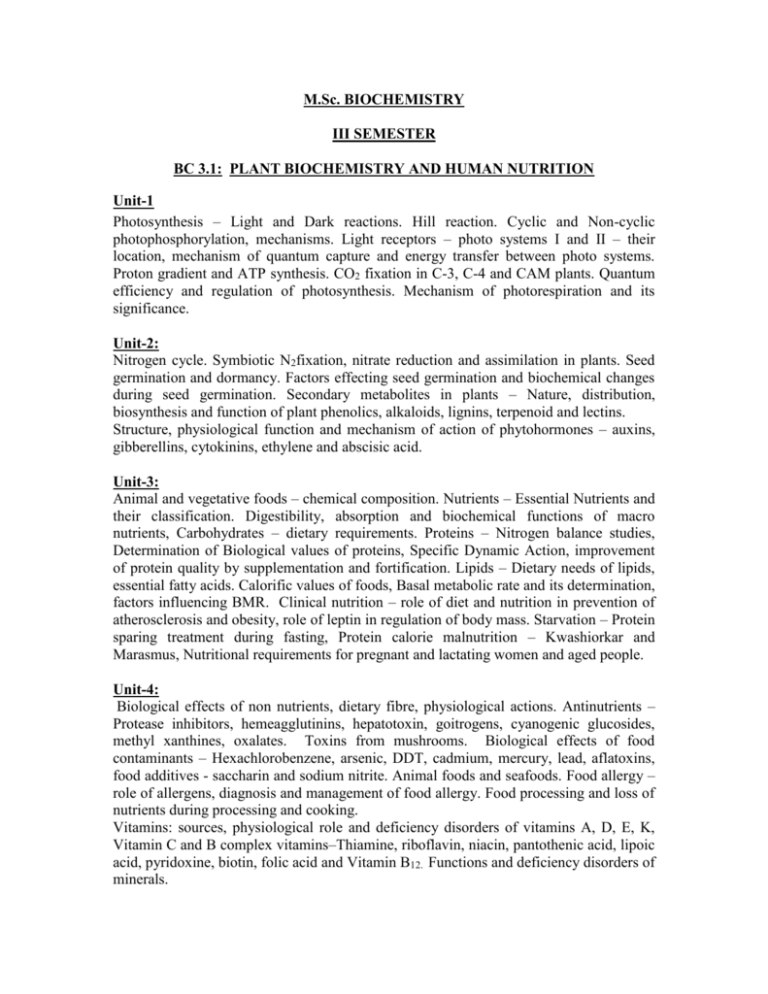
M.Sc. BIOCHEMISTRY III SEMESTER BC 3.1: PLANT BIOCHEMISTRY AND HUMAN NUTRITION Unit-1 Photosynthesis – Light and Dark reactions. Hill reaction. Cyclic and Non-cyclic photophosphorylation, mechanisms. Light receptors – photo systems I and II – their location, mechanism of quantum capture and energy transfer between photo systems. Proton gradient and ATP synthesis. CO2 fixation in C-3, C-4 and CAM plants. Quantum efficiency and regulation of photosynthesis. Mechanism of photorespiration and its significance. Unit-2: Nitrogen cycle. Symbiotic N2fixation, nitrate reduction and assimilation in plants. Seed germination and dormancy. Factors effecting seed germination and biochemical changes during seed germination. Secondary metabolites in plants – Nature, distribution, biosynthesis and function of plant phenolics, alkaloids, lignins, terpenoid and lectins. Structure, physiological function and mechanism of action of phytohormones – auxins, gibberellins, cytokinins, ethylene and abscisic acid. Unit-3: Animal and vegetative foods – chemical composition. Nutrients – Essential Nutrients and their classification. Digestibility, absorption and biochemical functions of macro nutrients, Carbohydrates – dietary requirements. Proteins – Nitrogen balance studies, Determination of Biological values of proteins, Specific Dynamic Action, improvement of protein quality by supplementation and fortification. Lipids – Dietary needs of lipids, essential fatty acids. Calorific values of foods, Basal metabolic rate and its determination, factors influencing BMR. Clinical nutrition – role of diet and nutrition in prevention of atherosclerosis and obesity, role of leptin in regulation of body mass. Starvation – Protein sparing treatment during fasting, Protein calorie malnutrition – Kwashiorkar and Marasmus, Nutritional requirements for pregnant and lactating women and aged people. Unit-4: Biological effects of non nutrients, dietary fibre, physiological actions. Antinutrients – Protease inhibitors, hemeagglutinins, hepatotoxin, goitrogens, cyanogenic glucosides, methyl xanthines, oxalates. Toxins from mushrooms. Biological effects of food contaminants – Hexachlorobenzene, arsenic, DDT, cadmium, mercury, lead, aflatoxins, food additives - saccharin and sodium nitrite. Animal foods and seafoods. Food allergy – role of allergens, diagnosis and management of food allergy. Food processing and loss of nutrients during processing and cooking. Vitamins: sources, physiological role and deficiency disorders of vitamins A, D, E, K, Vitamin C and B complex vitamins–Thiamine, riboflavin, niacin, pantothenic acid, lipoic acid, pyridoxine, biotin, folic acid and Vitamin B12. Functions and deficiency disorders of minerals. BC 3.2: IMMUNOLOGY Unit- I Types of immunity – Innate and adaptive. Antigens, Super antigens, Adjuvants. Cells and organs of the immune system -Thymus, bone-marrow, spleen, lymph node. T and B lymphocytes – Origin, activation, differentiation, characteristics and functions. Nature of T and B cell surface receptors. Major Histocompatibility Complex- H-2, HLA, Polymorphism of MHC molecules. Congenic and inbred strains of mice. MHC restriction and its role in immune response, Antigen presenting cells, Processing and presentation of antigens. Unit-2 Structure of immunoglobulins, Immunoglobulin classes and biological activities. Isotypes, Allotypes, Idiotypes. Immunoglobulin genes and antibody diversity, Class switching, Humoral and cell-mediated immune responses, Cytokines, Interleukins, Interferons, The Complement components and biological consequences of complement activation. Unit-3 Antigen-antibody interactions: Antibody affinity and avidity, Precipitation reactions – Immunodiffusion, Radial immunodiffusion, double immunodiffusion, immunoelectrophoresis, Rocket immunoelectrophoresis, Agglutination reactionsHemeagglutination and complement fixation, Immunoflourescence, FACS, RIA, ELISA, Immunoblotting, Hybridoma technology - production of monoclonal antibodies and their applications, humanized antibodies. Unit-4 Immune effector mechanisms – Hypersensitivity: immediate (type I, type II, type III) and delayed hypersensitivity reactions, Immunodeficiencies - SCID and AIDS. Autoimmunity - organ specific (Hashimoto’s thyroiditis) and systemic (Rheumatoid arthritis) diseases. Tissue transplantation - auto, allo, iso and xenograft, tissue matching, transplantation rejection, mechanism and control, immunosuppressive agents. Cancer immunology – Tumor associated antigens, Immunological surveillance of cancer. BC 3.3: REGULATION OF GENE EXPRESSION AND GENETIC ENGINEERING Unit-1: Structure and function of lac operon, Induction of lac operon – a negative control system, Catabolite repression – a positive control system, Function and regulation of trp operon, Atenuation of trp operon, ara operon: dual functions of the repressor, Diversity of sigma factor - Bacterial sporulation and Phage infection in Bacillus subtilis, Heat-shock response in E.coli, Regulation of phage variation in Salmonella. Regulation of lytic phase and lysogenic phase of Bacteriophage . Unit-2: Structural changes in the eukaryotic active chromatin - hypersensitive sites, chromatin remodeling, Levels of eukaryote gene control - Control at the level of transcription, processing of RNA, mRNA stabilization in the cytoplasm and translation of mRNA. Eukaryote promoter and enhancer sequence organization. Interaction of eukaryote transcriptional factors with DNA - helix-turn-helix motif, zinc-finger motif, leucine zipper, helix-loop-helix motif. Regulation of galactose metabolism in yeast. Steroid hormone induced gene expression. Regulation of gene expression by anti-sense RNA. Unit-3: Restriction endonucleases, Restriction maps, isolation of gene fragments using restriction endonucleases and mechanical shearing. Cloning vectors - Isolation and properties of plasmids, bacteriophage cosmids, Ti plasmid (binary vector), expression vectors, viral vectors, YAC, BAC, phagemids and vectors used for cloning in mammalian cells, other enzymes related to molecular cloning. Hosts - Prokaryotic : E.coli, B.subtilis, Eukaryotic: Yeast and mammalian cell lines. Ligation of fragments - Cohesive and blunt ends, Homopolymer tailing. Gene transfer techniques. Biological and artificial delivery system, knockout mice. Unit-4: Cloning strategies, shot gun experiments, isolation of poly mRNA, synthesis of cDNA, cDNA cloning in bacteria. Genomic and cDNA libraries. Identification of recombinants structural and functional analysis of recombinants. Design and preparation of DNA and RNA probes for hybridization. Southern blotting, Northern blotting, South-Western blotting, PCR, Expression of cloned genes in bacteria, yeast, animal and plant cells. Biological, Medical and Industrial applications of recombinant DNA technology. Transgenics: Making Golden rice and Dolly. BC 3.4: INDUSTRIAL BIOTECHNOLOGY Unit-1: Fermentation technology – Principles of fermentation, surface, submerged and solid state fermentations. Batch, fed batch, semi-continuous and continuous culture techniques. Design and operation of fermentors, Agitation and aeration, Types of fermentorscontinuous stirred tank fermentor (CSTF), air-lift fermentor, Types of reactions in fermentations, Selection and characteristics of industrial microorganisms, Primary and secondary metabolites, Strategies for strain improvement and maintenance of the industrial strains, Raw materials, different types of fermentation media, Recovery of products, steps in downstream processing, Bioreactors. Unit-2: Production of ethyl alcohol and beer by yeast, Fermentative production of Antibiotics pencillin, streptomycin, tetracycline, Organic acids - citric acid, lactic acid, acetic acid, Enzymes - amylase, proteases, streptokinase, Amino acids - glutamic acid, lysine and Vitamins - B12, B2, and vitamin C. Production of biogas from agricultural wastes. Unit-3: Immobilization of enzymes and cells – methods of immobilization, effect of partition on kinetic properties of enzymes, immobilization of multienzyme systems, enzyme reactors, packed bed reactors, fluidized bed reactors, problems in using immobilized biocatalysts, Industrial and medical applications of immobilized enzymes and cells. Principle and applications of Protein engineering. Principle, types and applications of Biosensors. Unit: 4: Single cell protein- Production and applications, Microbial transformations (bioconversions)-: Types and applications, steroidal transformations. Bioleaching, biosorption, biodegradation, bioremediation. Biofertilizers – Blue-green algal fertilizers (Azolla, Aneabena), seaweed fertilizers, Mycorrhiza, Biocontrol agents- Siderophores, biopesticides – Insecticidal toxin of Bacillus thuringiensis, mode of action and control, Bacculoviruses. PRACTICAL-I BC 3.5: IMMUNOLOGY AND FOOD ANALYSIS Determination of A, B, O and Rh blood groups in human beings Dissection and Identification of thymus, spleen and lymph nodes Techniques of Immunization and Bleeding Ouchterlony immunodiffusion for detection of Antigens Radial Immunodiffusion Immunoprecitation and precipitin curve Immunoelectrophoresis Rocket immunoelectrophoresis Purification of bovine serum IgG by ammonium sulphate precipitation Enzyme Linked Immuno Sorbent Assay (ELISA) Western blotting Diagnostic test for typhoid fever VDRL Test Pregnancy Test Isolation of Glycogen from Sheep Liver Preparation of Carotenes from Carrots Preparation of Haemoglobin from Blood Preparation of Chloroplasts from green leaves Isolation of Glutamic acid from Gluten of Wheat Extraction and estimation of total lipids from oil seeds (solvent extraction) Quantitative analysis of foods for a) Moisture b) Ash c) Iron d) Calcium e) Copper PRACTICAL-II BC 3.6: BIOTECHNOLOGY AND GENETIC ENGINEERING Fermentative production and quantification of: Antibiotics - penicillin/ streptomycin/ tetracycline Organic acid: citric acid/ lactic acid/ acetic acid Enzymes: amylase/ protease/urease Amino acid: glutamic acid/ lysine Vitamins: B12/ B2/vitamin C Ethyl alcohol/ fruit wine and calculation of fermentation efficiency Methods of immobilization of protein/enzyme and microbial cells Isolation of plasmids and estimation of plasmid DNA by UV method Restriction digestion of DNA, Ligation of RE fragments Agarose and Polyacrylamide gel electrophoresis of nucleic acids Recovery of DNA/RNA fragments from agarose gels Preparation of competitive E.coli cells and transformation Expression of cloned gene (GFP) DNA finger printing (RFLP or RAPD) PCR Southern blotting M.Sc., BIOCHEMISTRY SEMESTER SYSTEM CREDIT SYSTEM SCHEME OF INSTRUCTION AND EXAMINATION Paper No.Title of the Paper Periods/ No of Week Credits Duration of Exam (hrs) Max Marks III Semester: BC 3.1: Plant Biochemistry and Human Nutrition BC 3.2: Immunology BC 3.3: Regulation of Gene Expression and Genetic Engineering BC 3.4: Industrial Biotechnology *Practicals: 4 4 4 4 3 3 85 85 4 4 4 4 3 3 85 85 BC 3.5: Immunology and Food Analysis 12 BC 3.6: Biotechnology and Genetic Engineering 12 BC 3.7: Viva – Voce -- 2 2 1 6 6 85 85 25 ---535 Total marks for III Semester + 90* = 625 -----------------------------------------------------------------------------------------------------------------------------------------------*Internal assessment component carries 15 marks for each theory and practical papers. .
